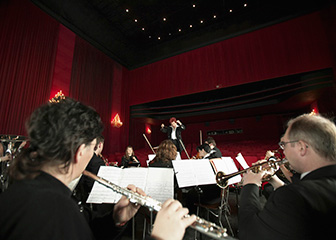Summary
Please enable javascript to play this video.
| Quick Facts: Musicians and Singers | |
|---|---|
| $42.45 per hour | |
| No formal educational credential | |
| None | |
| Long-term on-the-job training | |
| 169,800 | |
| 1% (Slower than average) | |
| 1,800 | |
What Musicians and Singers Do
Musicians and singers play instruments or sing for live audiences and in recording studios.
Work Environment
Musicians and singers often perform in settings such as concert halls, churches, and clubs. Part-time work is common, and work schedules may vary and include mornings, nights, or weekends.
How to Become a Musician or Singer
Musicians and singers typically do not need formal postsecondary education to enter the occupation. However, those pursuing careers in some genres, such as classical or opera, may choose to earn a bachelor's or higher degree. Musicians and singers need extensive training and regular practice to acquire their skills.
Pay
The median hourly wage for musicians and singers was $42.45 in May 2024.
Job Outlook
Employment of musicians and singers is projected to grow 1 percent from 2024 to 2034, slower than the average for all occupations.
Despite limited employment growth, about 19,400 openings for musicians and singers are projected each year, on average, over the decade. Most of those openings are expected to result from the need to replace workers who transfer to different occupations or exit the labor force, such as to retire.
State & Area Data
Explore resources for employment and wages by state and area for musicians and singers.
Similar Occupations
Compare the job duties, education, job growth, and pay of musicians and singers with similar occupations.
More Information, Including Links to O*NET
Learn more about musicians and singers by visiting additional resources, including O*NET, a source on key characteristics of workers and occupations.
 United States Department of Labor
United States Department of Labor










